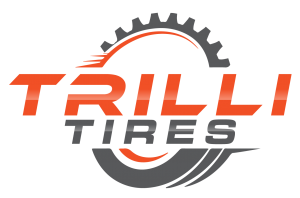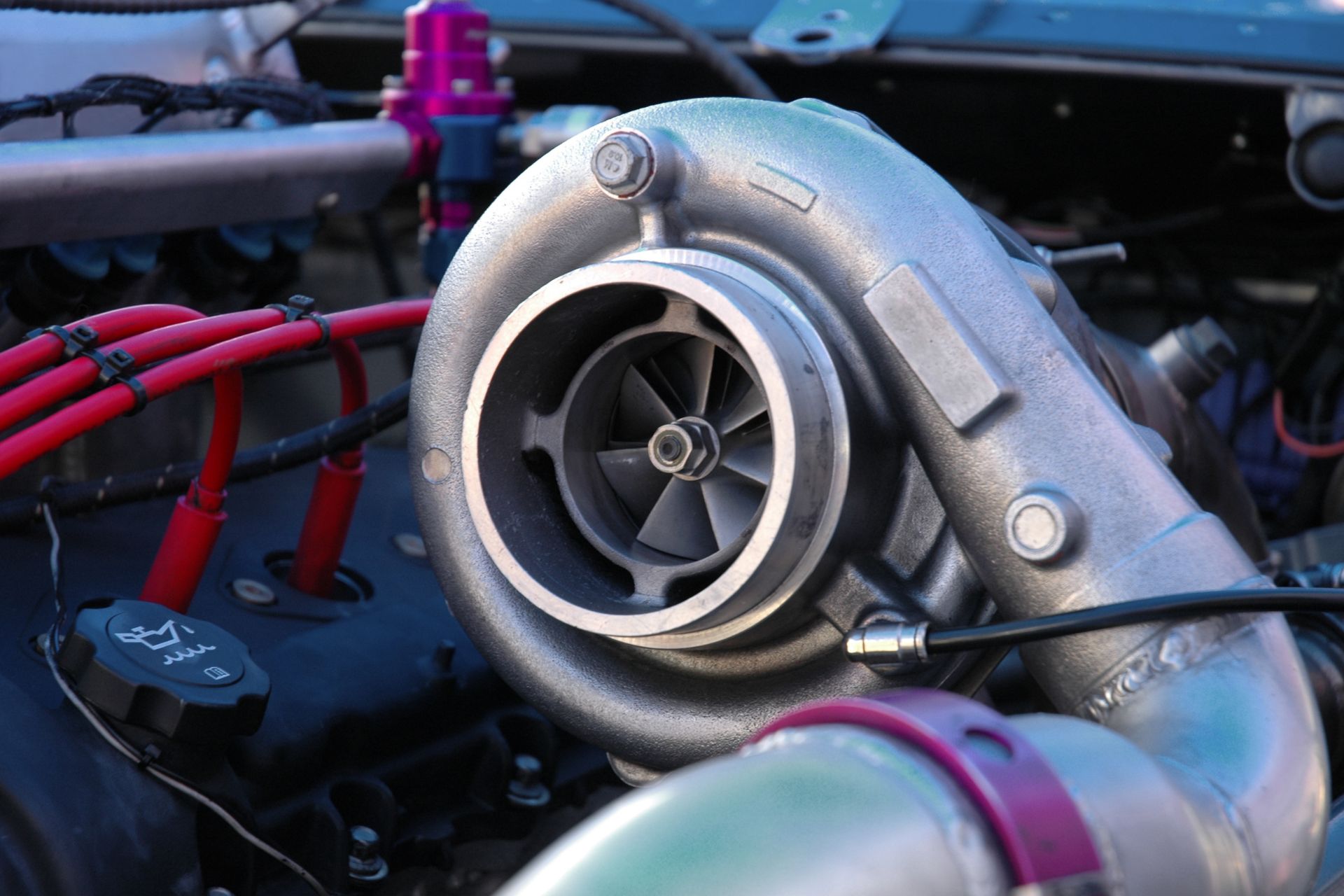What Is a Turbocharger and How Does It Work?
A turbocharger is a forced induction device that significantly increases an engine’s power output by forcing more compressed air into the combustion chamber. By utilizing otherwise wasted exhaust gases to spin a turbine, a turbo system improves engine efficiency and performance without increasing engine displacement.
The basic function of a turbo is to harness energy from the exhaust. This energy spins a turbine connected to a compressor wheel, which draws in fresh air and compresses it before it enters the engine. The denser air allows more fuel to be burned, resulting in more power generated from the same engine size.
This process improves both horsepower and torque, making turbochargers a popular option in both performance cars and everyday vehicles looking to achieve better fuel efficiency and cleaner emissions.
The Main Components of a Turbocharging System
A complete turbo system consists of several crucial components that work in harmony to deliver boosted power:
Turbine Housing and Wheel
The turbine housing routes exhaust gases into the turbine wheel. The gases cause the wheel to spin at extremely high speeds—often over 100,000 RPM—which in turn powers the compressor on the other side.
Compressor Housing and Wheel
The compressor wheel draws in ambient air and compresses it. The housing then directs this pressurized air into the engine’s intake manifold. This process significantly increases the volume of air available for combustion.
Center Housing and Rotating Assembly (CHRA)
This is the middle section of the turbo where the shaft connecting the turbine and compressor resides. The CHRA also contains the bearings and oil lubrication system to keep the turbo operating smoothly.
Intercooler
Compressed air gets hot during the turbocharging process, which can reduce efficiency and cause engine knock. An intercooler cools the air before it enters the engine, helping maintain optimal performance and reliability.
Wastegate
To prevent overboost, a wastegate controls the flow of exhaust gases to the turbine. It opens to bypass some of the gases once a target pressure is reached, ensuring the turbo doesn’t spin beyond safe limits.
Blow-Off Valve
This valve vents excess pressure when the throttle closes suddenly, such as during gear shifts. It prevents compressor surge and protects the turbo from damage.
Different Types of Turbochargers
Various designs exist to meet different performance needs and engine characteristics. Understanding these types can help you choose the best system for your vehicle.
Single Turbo
The most common configuration, a single turbo setup offers a straightforward and cost-effective method to increase power. Its characteristics can be tailored to deliver either low-end torque or high-RPM power, depending on size.
Twin-Turbo
A twin-turbo setup uses two smaller turbo units. These can be arranged in parallel to divide the workload between engine banks (in V-type engines), or in a sequential configuration where one turbo operates at low RPM and the other at higher RPMs for smoother power delivery.
Variable Geometry Turbo (VGT)
This advanced design uses adjustable vanes inside the turbine housing to optimize exhaust flow across the RPM range. Common in diesel engines, VGTs provide excellent throttle response and fuel efficiency.
Electric Turbo
Still an emerging technology, electric turbos use electric motors to spool up quickly, eliminating lag and improving performance across all RPMs. They are often seen in hybrid or concept vehicles and represent the future of turbocharging.
Benefits of Turbocharging Your Vehicle
The primary reason for adding a turbo system is improved engine performance, but there are several additional benefits worth considering:
More Horsepower Without Larger Engines
Turbocharged engines can produce significantly more power than naturally aspirated engines of the same size. This makes them ideal for compact vehicles where space and weight are limited.
Improved Fuel Efficiency
Because they allow smaller engines to perform like larger ones, turbo systems can enhance fuel economy when driven conservatively. Many modern vehicles use smaller turbocharged engines to meet stringent emissions regulations.
Better Altitude Compensation
Naturally aspirated engines lose power at higher altitudes due to lower air density. A turbo helps mitigate this loss by compressing air before combustion, ensuring more consistent performance regardless of elevation.
Lower Emissions
By increasing the engine’s efficiency and enabling more complete combustion, turbo systems can reduce harmful emissions. This makes them particularly appealing to manufacturers striving to meet environmental standards.
The Challenge of Turbo Lag and How It’s Managed
One commonly discussed drawback of turbocharged systems is turbo lag. This refers to the delay between pressing the accelerator and the turbo delivering increased power. It occurs because the system depends on exhaust gases, which build up only after the engine revs up.
Modern engineering has introduced several solutions to mitigate lag:
- Smaller, faster-spooling turbos
- Twin-scroll designs that separate exhaust pulses for better efficiency
- Variable geometry turbines for broader powerbands
- Hybrid-electric turbochargers to provide instant boost with electric motors
In performance applications, lag is often minimized through tuning, optimal turbo sizing, and intercooling strategies.
Installation and Maintenance Considerations
Installing a turbocharger isn’t a simple bolt-on task. It requires careful planning and several supporting upgrades:
Fuel System Enhancements
More air means the engine needs more fuel. Upgrades to fuel injectors, fuel pump, and ECU tuning are usually required to ensure the mixture remains balanced.
Cooling and Lubrication
A turbocharger generates significant heat. A high-quality oil supply and efficient cooling system are critical to avoid premature wear or failure.
Exhaust Modifications
Since a turbo is driven by exhaust gases, you’ll likely need a custom exhaust manifold, downpipe, and possibly a full exhaust system.
Transmission and Drivetrain Upgrades
The increased power can strain your clutch, transmission, and differential. Reinforcements may be necessary depending on the performance increase.
Tuning Is Crucial
Proper tuning is essential for a turbocharged engine. It ensures optimal air-fuel ratios, timing, and boost levels to maintain performance while avoiding engine knock or detonation.
Turbocharger vs. Supercharger: A Brief Comparison
While both are forced induction systems, turbocharger and supercharger differ significantly in design and application:
- Power Source: A turbo is driven by exhaust gases; a supercharger is belt-driven by the engine.
- Efficiency: Turbos tend to be more efficient as they recycle energy from the exhaust.
- Throttle Response: Superchargers typically offer instant response, while turbos may experience lag.
- Complexity: Turbo systems are more complex and require extensive plumbing and cooling systems.
Turbocharging in Modern Vehicles
Today, turbocharging is not just reserved for performance vehicles. It’s now widely adopted in compact cars, trucks, and even luxury sedans. Manufacturers use it to downsize engines while maintaining or increasing power output, thereby improving fuel economy and reducing emissions.
Examples include:
- Ford’s EcoBoost engines
- Volkswagen’s TSI lineup
- BMW’s TwinPower Turbo engines
- Chevrolet’s turbocharged four-cylinder units
These systems showcase how turbos have evolved from niche performance parts to essential components of modern automotive engineering.
The Future of Turbo Technology
Advancements continue to shape the next generation of turbocharging. Electric turbochargers, variable geometry units, and hybrid systems aim to eliminate lag, boost fuel economy, and enhance reliability.
As more automakers adopt forced induction and electrification, we can expect turbos to play a pivotal role in bridging the gap between traditional internal combustion and the all-electric future.
Final Words
A turbocharger is a powerful tool for enhancing engine performance, fuel efficiency, and overall vehicle dynamics. By compressing air using energy that would otherwise be wasted, turbo systems extract more power from each drop of fuel. While installation requires careful planning and supporting upgrades, the benefits are substantial for drivers seeking improved performance or efficiency.
Considering a turbo upgrade or maintenance? Contact TrilliTires in Richmond Hill for expert service and trusted advice to get the most out of your vehicle.

